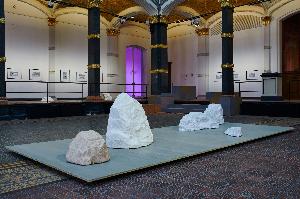Shinoda Taro
Shinoda Taro;Taro Shinoda
Place: Tokyo
Born: 1964
Death: 2022
Biography:
Shinoda Taro was a Japanese artist born in Tokyo in 1964. He started his career as an artist after being educated in landscape gardening school. His work encompasses sculpture, video works, and installation, and delves deep into the relationship between humans and the natural world. Shinoda's background in garden design greatly influenced his later art career.
Early Life and Education
Shinoda Taro was born in Tokyo, Japan in 1964. He was educated in landscape gardening school, which had a significant impact on his future art career. After completing his education, Shinoda started his career as an artist, exploring various mediums such as sculpture, video works, and installation.
Artistic Style and Themes
Shinoda's work is characterized by its unique blend of human and natural elements. His sculptures, videos, and installations often feature humans and nature as central themes. Shinoda's background in garden design is evident in his use of organic materials and natural forms . His work has been exhibited at various museums, including the Tokyo Metropolitan Museum and the Mori Art Museum .
Notable Works
Some of Shinoda's notable works include "Sculpture 1" , a sculpture made from recycled materials , and "Video Work 2" , a video installation featuring natural landscapes . His work has been praised for its unique blend of human and natural elements, and his use of innovative techniques has been recognized by art critics and collectors alike.
Influences and Legacy
Shinoda's work has been influenced by various artists, including Japanese artist Kagen Higuchi , known for his artwork "Life/One’s Self Only This Road" . Shinoda's legacy continues to be felt in the art world, with his work being exhibited at various museums and galleries. His unique style and themes have inspired a new generation of artists, and his use of sustainable materials has been recognized as an important contribution to the field of environmental art.
- Shinoda Taro's artwork can be found on https://Wikioo.org/@/Shinoda-Taro
- More information about Kagen Higuchi can be found on https://Wikioo.org/@/Kagen-Higuchi
- The Tokyo Metropolitan Museum has a collection of Shinoda's work, which can be viewed on https://Wikioo.org/Art.nsf/O/A@D3C5ZH
Shinoda Taro passed away in 2022, leaving behind a legacy of innovative and thought-provoking artwork. His unique style and themes continue to inspire artists and art enthusiasts alike, and his use of sustainable materials has been recognized as an important contribution to the field of environmental art.


